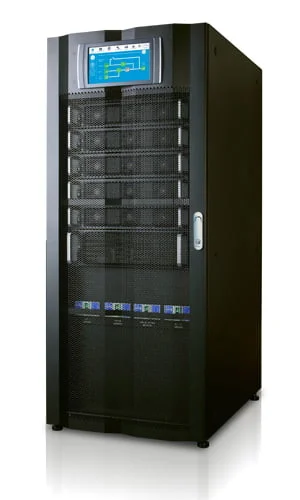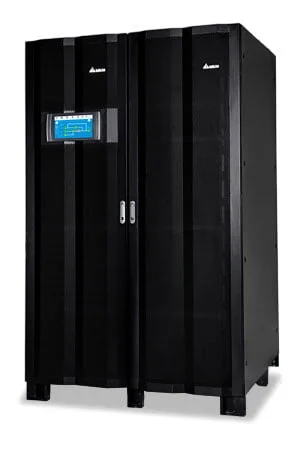A UPS (Uninterruptible Power Supply) is vital for safeguarding electronics from power interruptions and surges, but like all critical infrastructure, it requires consistent monitoring and timely maintenance to stay reliable.
Failing to recognize the early warning signs can lead to device damage, business disruptions, and loss of critical data.
Below is a comprehensive guide to understanding the top five signs that your UPS may need maintenance or could be approaching the end of its lifecycle, along with deeper insight into each issue and practical steps to address them.
Introduction: Why UPS Maintenance Matters
In an era where digital infrastructure underpins everything from home offices to large data centers, the seamless functioning of a UPS is essential for protecting both productivity and sensitive equipment.
Routine maintenance not only extends the UPS’s lifespan but also provides peace of mind that, when a power outage strikes, your systems remain operational.

1. Frequent Alarms or Warning Beeps
If your UPS starts beeping or sounding alarms often, take it seriously. These alerts are typically programmed to notify users of internal faults, such as failing batteries, overloads, fan malfunctions, or abnormal voltage levels.
Ignoring persistent alarms increases the risk of sudden UPS failure during a critical power event.
Action Steps:
- Check the UPS manual for error code meanings.
- Address warnings immediately—replace bad batteries or troubleshoot as needed.
- Log incidents for ongoing analysis.
2. Reduced Battery Backup or Decline in Battery Performance
UPS batteries have a finite lifespan, commonly between three and five years.

If you notice your UPS cannot sustain devices for as long as before, or if it recharges slowly, this is likely due to battery degradation.
The system’s runtime may be significantly shorter during outages, rendering your UPS ineffective when you need it most.
Action Steps:
- Monitor backup time during regular tests.
- Schedule replacement for batteries nearing end-of-life.
- Test battery voltage and capacity during maintenance cycles.
3. Physical Damage, Unusual Odors, or Overheating
Physical inspection is fundamental. Look for signs such as:
- Bulging or leaking batteries.
- Discoloration, scorch marks, or melting plastic.
- Unusual smells (often acidic or burning).
Overheating, often caused by dust accumulation, blocked vents, aging fans, or component failure, poses a fire risk and is a major indicator of a developing fault.
Action Steps:
- Conduct visual inspections regularly.
- Ensure proper ventilation and cooling within the installation environment.
- Replace any physically damaged or overheating components immediately.
4. Inconsistent Power Supply or Load Handling Issues
If your connected equipment experiences unexpected shutdowns, random restarts, or power fluctuations—even when mains power is stable—your UPS may not be supplying a consistent output. Causes can include failing internal electronics, worn-out capacitors, or incorrect load configuration.
Action Steps:
- Regularly load-test your UPS under simulated outage conditions (often done during annual professional maintenance).
- Review event logs for any abnormal power events.
- Make sure your UPS load is within the rated capacity.
5. Warning Lights, Error Codes, or Missed Maintenance
Modern UPS units display warning lights or error codes to highlight problems, from minor faults to imminent failures. Ignoring these or skipping scheduled maintenance greatly increases risk.
Action Steps:
- Respond promptly to any on-screen warnings.
- Record all maintenance activities and error messages for reference and compliance.
- Schedule professional, comprehensive inspections at least once per year.
Preventive Maintenance Best Practices
Routine preventive care is crucial for avoiding most UPS failures. Key steps include:
- Daily/Weekly: Check displays, listen for abnormal noises, verify temperature and ventilation.
- Monthly: Clean dust/fans, inspect batteries for corrosion or swelling, review system logs.
- Quarterly: Test battery voltage, check electrical connections, validate alarms.
- Annually: Arrange for professional load tests, inspect and replace aging components as needed, perform firmware upgrades.
Document all inspections, tests, and repairs. Good recordkeeping allows you to track UPS health trends and plan component replacements proactively.
Conclusion: Staying Ahead of UPS Failure
A proactive approach—combining regular visual checks, systematic testing, and quick responses to alarms—substantially decreases the chance of unexpected UPS failure.
The five signs outlined above are your best guide: frequent alarms, reduced battery backup, visible damage or overheating, inconsistent power supply, and ignored maintenance warnings.
Don’t wait until your UPS fails when it’s needed most—address these issues promptly to protect the integrity of your entire electronic ecosystem.


